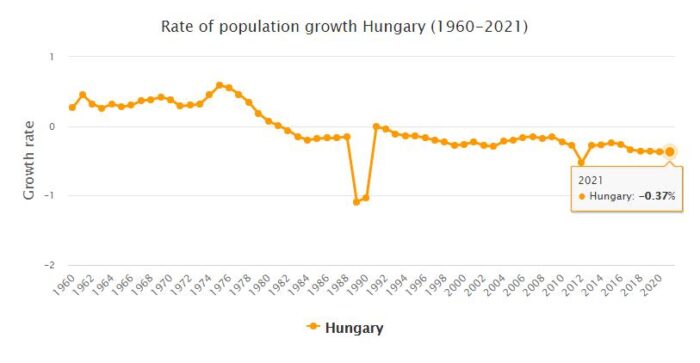Yearbook 2008
Hungary. Hungary in March recognized Kosovo’s independence, prompting Serbia to call its ambassador from neighboring countries. Belgrade, the capital of Serbia, stated that countries that make such a decision cannot have good relations with Serbia. In Hungary, there were concerns about how the ethnic Hungarians in the Serbian province of Vojvodina would be treated. See securitypology.com for the Republic of Hungary.
In the spring, Hungary led the demands of several new EU countries who considered that the Union’s targets for reduced CO2 emissions were unfair and too expensive for the old Eastern bloc countries with their strong dependence on coal, oil and gas. According to Hungary, the goals were based on the wrong conditions when they were based on 2005. Hungary wanted them to start from 1990 and take into account the sharp reductions in emissions that several former communist countries made after the disintegration of the planned economies.
- ABBREVIATIONFINDER: Click to see the meanings of 2-letter acronym and abbreviation of HU in general and in geography as Hungary in particular.
In April, the Peace Democrats left the government, and Prime Minister Gyurcsány and his Socialist Party ended up in a minority. However, the Peace Democrats pledged to continue supporting the government in Parliament, including when it came to accelerating the transition to the euro.
This autumn’s international financial crisis had severe repercussions for Hungary, which had large foreign loans, large budget deficits, declining exports and weak growth. The forint currency lost rapidly in value and the strong government and private borrowing in euros made the economy vulnerable. The central bank raised the interest rate by several percent, but the government saw the need to seek help from the EU through the European Central Bank and the International Monetary Fund (IMF). In a joint crisis package, which also included the World Bank, Hungary offered loans totaling $ 25.1 billion and thus became the first EU country to receive such support.
When Sweden’s Prime Minister Fredrik Reinfeldt visited Hungary in November, his colleague Gyurcsány explained that the old and richer EU countries cannot impose unreasonable demands on the new ones on reduced carbon dioxide emissions. He said that both sides must compromise. The Swedish government proposed a Swedish-Hungarian initiative, in which countries such as Sweden invest in the east so that emissions are reduced there, but investors can also offset the reductions.
In December, a Budapest court ordered the right-wing movement of the Guardian Association to be dissolved due to persecution of Roma.
The Prehistory of Hungary
Hungary’s prehistory is considered the country’s history in the Stone Age, the Bronze Age and the Iron Age.
Stone Age
In Hungary, one of the oldest settlements in the world has been found with traces of human learning. Fauna remains from the Mindel period and so-called “chopping tools”, which are the oldest stone tools we know, attest to a very high age. In the western part of the country bones of Neanderthal people and tools of the Mousterian nature have been found. A discovery from the cave Istállósskö is from the Aurignacien culture and dated to be approx. 40,000 years old. Characteristic of younger Paleolithic times is that the tools have improved. It also seems that more specialized hunting has been conducted. After the last ice age, the natural basis probably deteriorated, because it is relatively sparse with findings from Mesolithic time.
Younger Stone Age (Neolithic Age) is defined by the introduction of agriculture. In Hungary, the settlement of Körös is both the oldest and most important from early Neolithic times. The settlement dates back to the 5th millennium BC. In addition to farming, people have also been hunting and retreating. Körös shows a close relationship with Starčevo in Yugoslavia. No traces of early Neolithic settlement have been found north of Körös. Probably Mesolithic hunters and Sankers have lived here.
In Late Neolithic, peasant culture gained a strong Mediterranean character. Continuous settlement over a long period of time has created so-called town heaps (tells). Old houses were just leveled with the earth and new ones built on top. This, together with other debris, led to the villages lying on piles rising above the plain. Towards the end of the Late Neolithic period, such settlements ended, and arable farming appears to have lost its dominant position in favor of feuding.
The Bronze Age
The Bronze Age started just 2300 years before our era. Many tax finds show that the art of making bronze was high. Throughout this period a number of different cultural groups have lived side by side. People’s movements have probably occurred.
Iron Age
In the Iron Age, too, there were many different cultural groups in the area of present-day Hungary. The shooters left their mark on the cultural scene in the central Danube area for a while. In the 300s BC needed Celtic tribes into the country. These came for a while to dominate in northern and western Hungary. In 12–11 BC the land was conquered by Tiberius, and became part of the Roman province of Pannonia.
Population 2008
According to Countryaah reports, the population of Hungary in 2008 was 9,927,259, ranking number 85 in the world. The population growth rate was -0.320% yearly, and the population density was 109.6583 people per km2.

